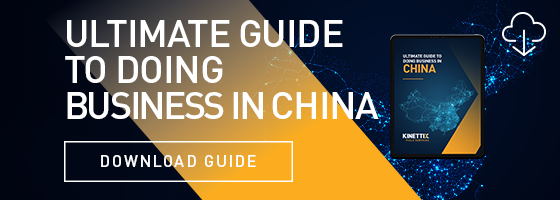When you’re conducting business overseas, there are certain challenges your company is bound to face. That’s the nature of global IT deployments — but these obstacles shouldn’t stop you from expanding into new markets. With research and preparation, your team can overcome these challenges and take your business to new heights.
One obstacle associated with international business is foreign exchange risk. When you’re planning your next global IT deployment in another country, you’ll need to be aware of the difference between currency in your home country and the target market.
What is Foreign Exchange Risk?
Any investment you make in another country has the risk of decreasing in value because of changes in the value of the involved currencies. Foreign exchange risk refers to any losses that may result from currency fluctuations during an international financial transaction.
This kind of risk is lessened when you do business in your own country because the currency is the same. When dealing with multiple currencies, however, there is a greater chance of valuations changing and negatively impacting your investment. The exchange rate also impacts the value of your investment and your return, so that’s also added to the foreign exchange risk.
3 Types of Foreign Exchange Risk & How to Combat Them
There are three major types of foreign exchange risk: transaction risk, economic risk, and translation risk. You should be aware of each type before pursuing a global IT deployment. Let’s talk more about what these three risks entail, as well as how to mitigate them.
Transaction Risk
The first type of foreign exchange risk is transaction risk. Transaction risk occurs when you’re making a purchase from (or selling to) a foreign company that uses a different currency. The exchange rate plays a major role in this kind of risk. If, while the purchase is going through, the exchange rate changes, you may have to pay more in your currency to meet the same value in the other country’s currency.
The best way to combat transaction risk is by completing and settling contracts as quickly as possible. Exchange rates constantly fluctuate, so finishing deals promptly ensures you can mitigate some of this risk.
Economic Risk
The next kind of risk, economic risk, involves your market value and forecasted economic changes. Social and governmental changes and demonstrations are also taken into account here. When any of these changes occur in the country you’re doing business with, your company’s market value could be negatively impacted because of your association with that country.
If shareholders become uneasy due to economic changes, this could be detrimental. To mitigate this risk, diversify your international business so that economic changes in one country have less of an impact on your value.
Translation Risk
Finally, translation risk impacts parent companies that have subsidiaries in other countries. While these subsidiaries might be generating significant profit margins, those profits could decrease as the financial statements are changed into the parent company’s home currency. In some cases, this translation can even lead to losses for the parent company.
The best way to mitigate this is to follow in the shoes of the BMW Group and set up treasury centers in other countries so you can use forward contracts to secure good rates.
Work With a Global Partner
Navigating international business concerns while planning a global IT deployment can be overwhelming when you do it on your own. Instead, work with a company with years of experience working with currencies, taxes, laws, and regulations around the world.
Kinettix has worked with teams in over 90 countries and has extensive knowledge of currencies, economics, and taxes to help your international IT projects run smoothly. Don’t let the unknown of foreign exchange risk pause your deployment planning. Instead, work with Kinettix and keep your projects moving.






